Ours is a holistic approach that does not hinder the physiological processes of the body. It's an approach that encourages the restoration of balance, by combatting the causes of symptoms as efficiently as possible and ensuring fast relief.
Symptoms and relief
SELECT YOUR NEED

Allergies
ALLERGIES: STATISTICAL PREVALENCE
About 15 percent of the population suffers from allergy-related issues, and about half of them have bronchial asthma.
Allergic rhinitis and allergic asthma are the most frequent forms among all allergic conditions and account for 75% of all clinical manifestations with an allergic cause, of which 25% are dermatological forms.
Epidemiological data for the Italian population shows that allergic conditions rank third in prevalence among chronic health issues, with an incidence of 10.9% in the total population:
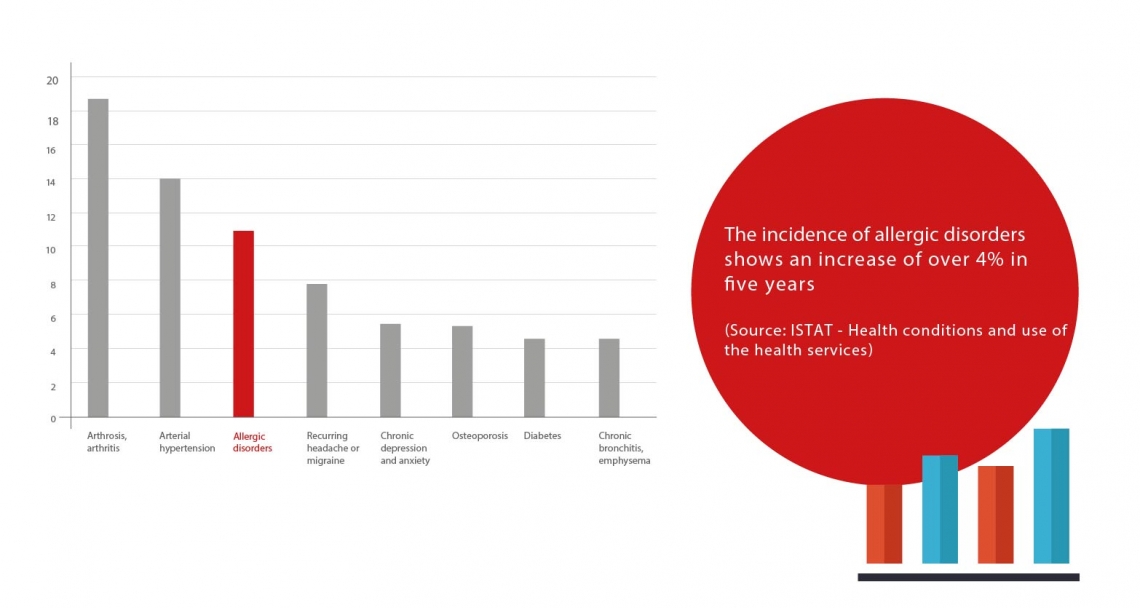
WHAT IS AN ALLERGY: THE IMMUNE SYSTEM IN DYNAMIC BALANCE
The immune system is a microscopic system designed to preserve the integrity of the body; in other words, to defend it from "external agents" deemed foreign to it.
When a substance comes into contact with our body, in the initial phase, the immune system performs a comparison of the substance with its own "internal memory": if it is recognized as compatible with the body, it is accepted, otherwise it is attacked.
A BALANCE THAT CAN BE COMPROMISED
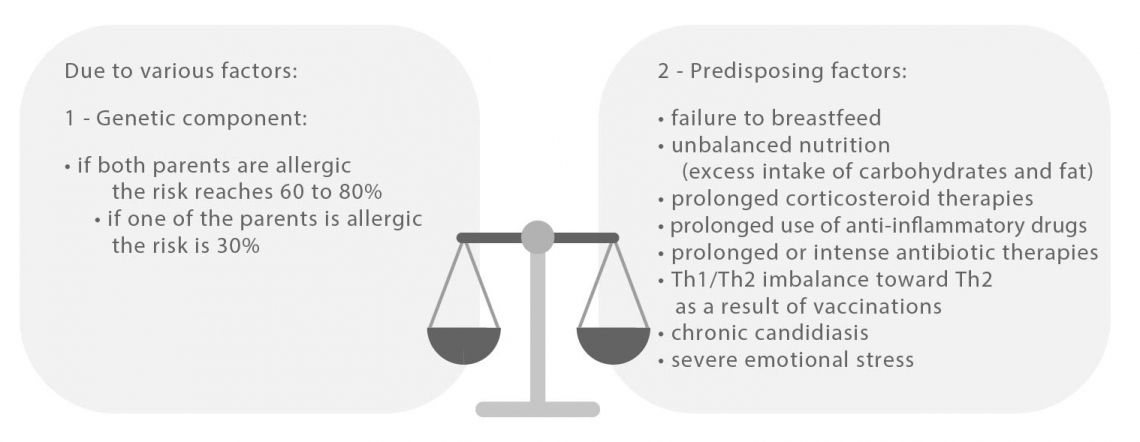
ALTERATION OF THE IMMUNE SYSTEM
The allergic individual has an imbalance shifted towards a predominance of Th2 cells.
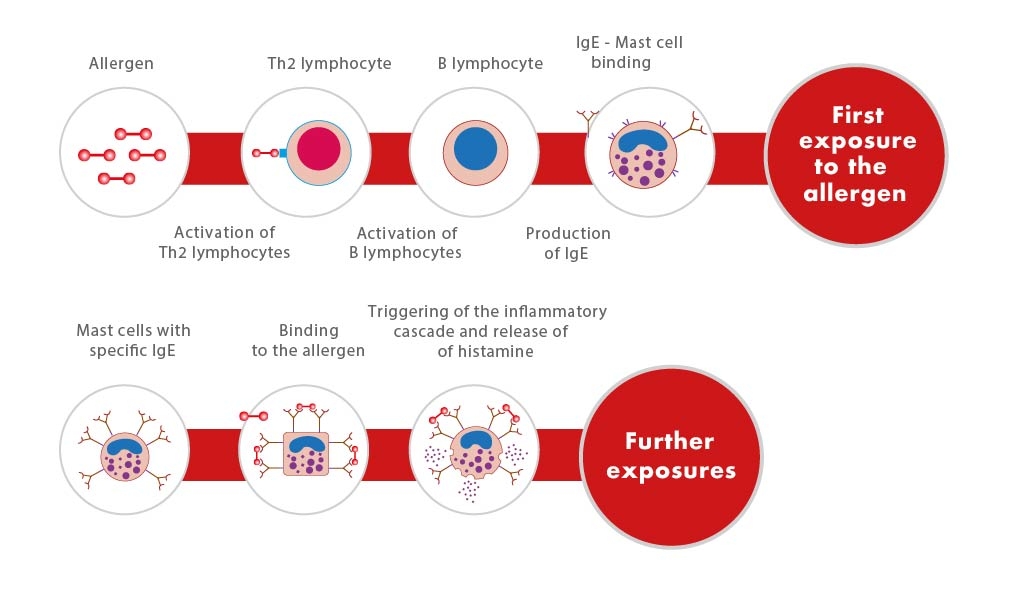
TYPES OF ENVIRONMENTAL ALLERGENS
- Dust mites
- Graminaceous plants
- Most common animal skin cells
- Parietaria, Betulaceae, Fagaceae, Plantain, Cupressaceae, etc.
A REAL "MARCH" THROUGH THE MUCOUS MEMBRANES OF THE BODY
From the very first months of life, the warning signs of the onset of allergy-related issues are numerous. Through specific bodily manifestations, an infant's body sets off the first alarm bells, such as the typical reddened skin lesions of atopic dermatitis, but also in the case of gastroenteritis, with symptoms such as diarrhea, vomiting and abdominal pain.
80% of children who suffered from atopic dermatitis early in life develop allergic asthma later on.
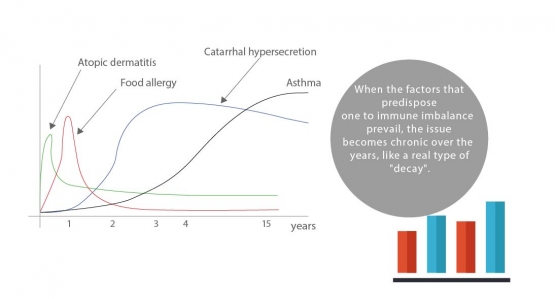
THE CLINICAL MANIFESTATIONS INVOLVE DIFFERENT ANATOMICAL AREAS, INCREASING OVER TIME:
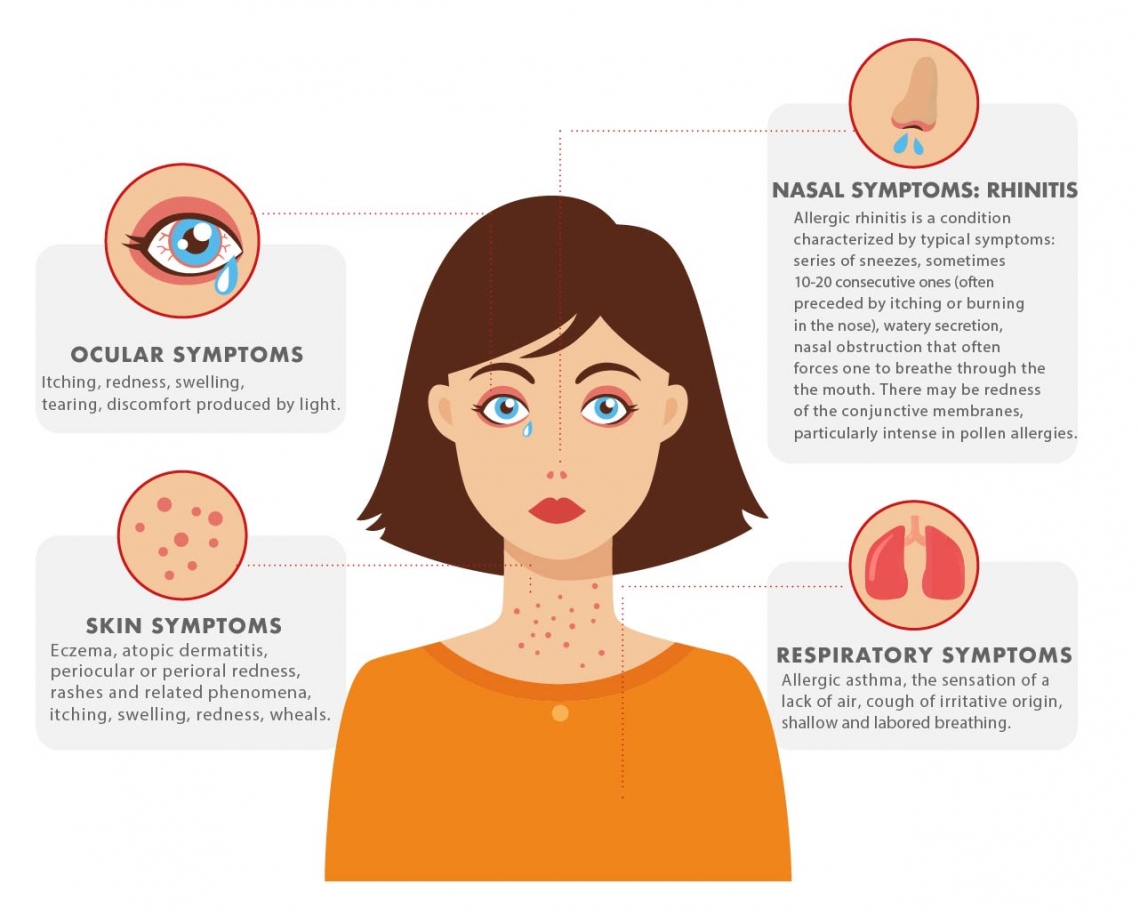
OVER THE PAST 20 YEARS, THE PERCENTAGE OF CHILDREN SUFFERING FROM ALLERGIES IN ITALY HAS MORE THAN TRIPLED, FROM 7% TO 25%
The most prevalent form is allergic rhinitis, which affects about 35 percent of adolescents (13-14 years old), followed by allergic asthma, which affects 9.5 percent of children, and food allergies, which are more common in the early years, affecting about 3 percent of young children under age 2.
The global situation is no better: allergies can be found in about 30 percent of the pediatric population at a global level, ranking third among the most prevalent chronic diseases after hypertension and arthritis.
(Press conference presenting the International Congress "Pediatric Allergies: from myth to reality - EBM prevention of pediatric allergy" sponsored by the WAO (World Allergy Organization) and Bambino Gesù Children's Hospital)
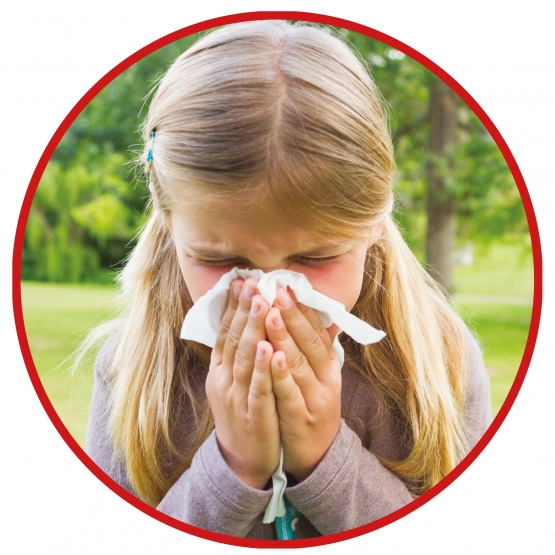
BIOSTERINE®
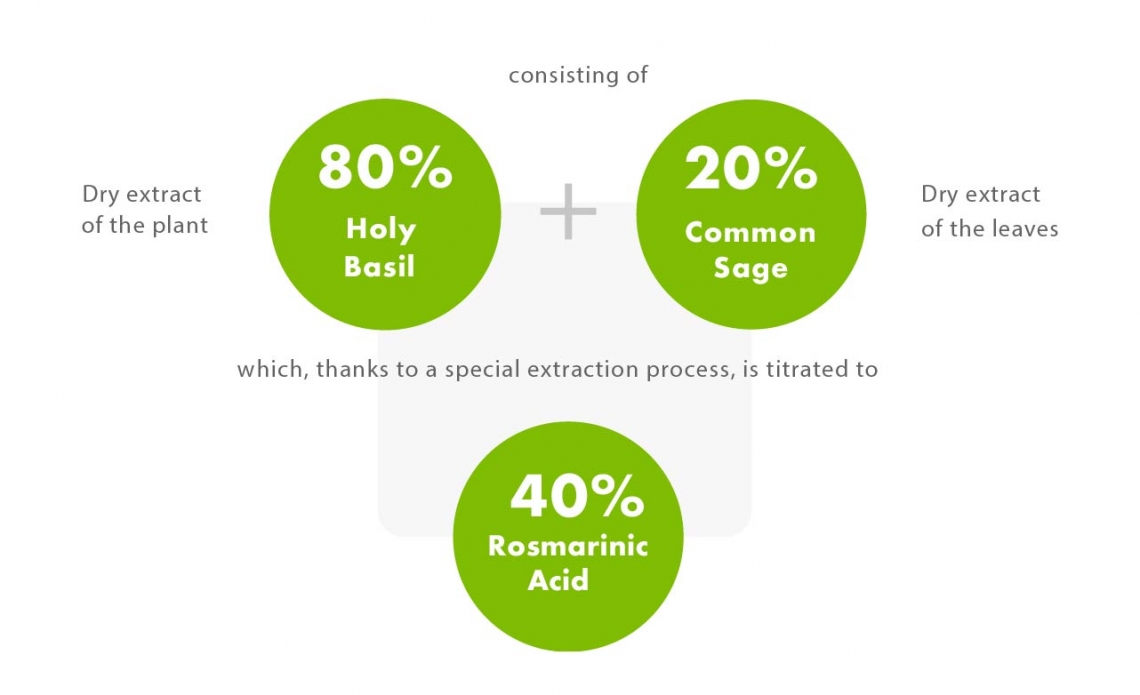
THE UNIQUE PHYTOTHERAPEUTIC EFFECTS OF BIOSTERINE® ARE:
IMMUNOMODULATING
Biosterine® is the most effective natural aid that can be used to restore the immune system's balance, as it acts as an immunomodulant, facilitating the differentiation capacity of the Th1/Th2 lymphocyte immune components. This extraordinary health-promoting property is determined in particular by the active molecules contained in the Holy Basil phytocomplex, among which flavonoids and ursolic acid stand out. It has long been known that holy basil facilitates the T-lymphocyte-mediated immune response by promoting T-lymphocyte proliferation and their differentiation into the Th1 component. This extract, and consequently the entire Biosterine® phytocompound, can polarise the immune response by enhancing the Th1 component. T helper (Th) lymphocytes can differentiate into two subpopulations, depending on the type of pathogen they come into contact with: Th1 is the lymphocyte component active against intracellular microorganisms, such as viruses, while Th2 is the component active against bacteria and fungi, i.e. pathogens of an extracellular nature and against antigens of various origins and nature. The immunomodulating capacity of Biosterine® translates into greater efficiency of the immune system, which is thus able to respond more promptly and specifically to aggressions, whether microbial or antigenic (pollens, mites, food allergens, etc.).
ANTI-INFLAMMATORY
In a clinical study of patients with allergic rhinitis, the consumption of rosmarinic acid led to a reduction in symptoms and inflammatory response, as well as a significant decrease in the number of eosinophils and neutrophils found in the mucus membranes. The active plant components in Biosterine® have an inhibiting effect on both cyclooxygenase-2 (COX-2) and inflammatory processes linked to the complement system.
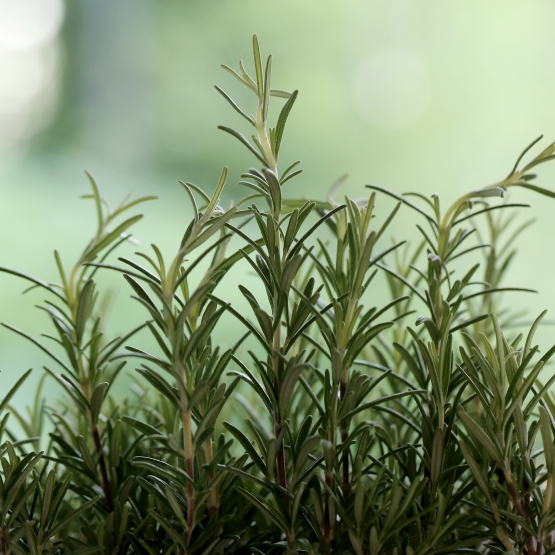
ANTI-ALLERGEN
When taken systemically, Biosterine® limits the proliferation and promotes the elimination of excess activated T-lymphocytes, eosinophilic granulocytes and neutrophils without harming immune cells that are in their resting state, thus preserving the immune system's responsiveness to invading microorganisms. Used locally, Biosterine® acts directly on the mucous membranes by reducing the inflammatory state and lowering tissue reactivity to allergens.
ANTI-ASMATIC
Biosterine® plays an important role in the prevention and treatment of asthma: it leads to an improvement in lung function, a decrease in the frequency of asthma attacks, increases sputum, reduces breathlessness, slows the respiratory rate and lowers eosinophils in the blood and sputum of patients, as demonstrated by clinical investigations.
Other useful extracts:
ANTI-INFLAMMATORY
PLANTAIN
Traditionally one of the most effective plants for the mucous membranes of the respiratory system, due to its expectorant, soothing and anti-inflammatory action. Recent preclinical studies have also shown its antihistamine and immunomodulating effects.
BLACKCURRANT
The most powerful and effective traditional remedy for inflammatory conditions is obtained from the extract of its leaves. Numerous preclinical studies have shown its exceptional antioxidant, analgesic and anti-asthmatic properties, with no side effects. It also protects the mucous membranes of the respiratory tract by stimulating collagen production.
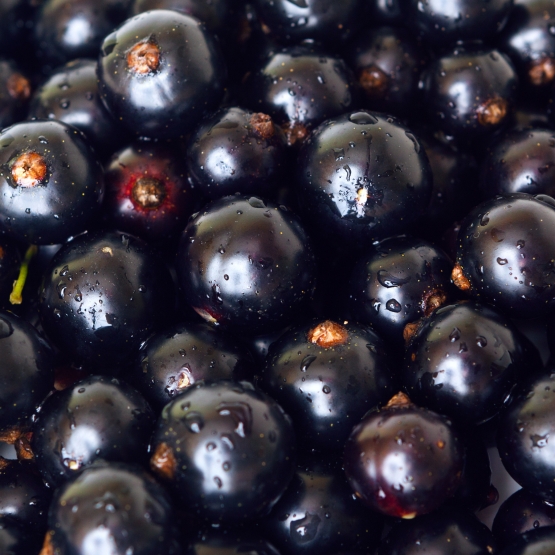
CAPER
Caper flowers are known for their strong antihistamine, antioxidant and natural anti-inflammatory properties given by the presence of alkaloids, phytosterols and flavonoids, particularly Rutin and Quercetin. Caper extract has a protective effect against histamine-induced bronchospasm as evidenced by scientific studies.
RED TEA
Due to its very high flavonoid content, red tea leaf extract stabilizes mast cell membranes, inhibits the recall of eosinophils and lymphocytes into the mucosa, the site in contact with the allergen, and hinders the inflammatory process. The high vitamin C content, whose anti-allergic properties are known, contributes to the antihistamine action.
PERILLA
Perilla extract, rich in polyphenols, has an inhibitory effect on the most important chemical mediators of allergies, resulting in a notable improvement in allergic rhinitis.
ANTIHISTAMINES AND ANTIOXIDANTS
QUERCETIN
It is a flavonoid considered a natural antihistamine: numerous studies have shown that Quercetin can inhibit mast cell degranulation, blocking the release of histamine and proinflammatory cytokines.
RUTIN
It is a glycoside of Quercetin, extraordinarily effective in lowering an individual's allergic reactivity. Due to its antihistamine and anti-inflammatory properties, which have been demonstrated in numerous preclinical studies, it can effectively assist the action of Quercetin.
LIFESTYLE – NUTRITION FOR ALLERGIES
Healthy eating is known to be indicated for preventing and treating various diseases such as obesity, high blood pressure, diseases of the cardiovascular system, metabolic diseases and type 2 diabetes. However, it is little known that the alleviation of allergic symptoms to pollen, mites, and latex can be enhanced by conscious food choice. Specifically, the recommended therapy is to limit or, even better, avoid foods that contain or can induce the body to produce histamine, one of the mediators naturally released by our body which is responsible for the typical allergic symptoms, such as sneezing and itching, particularly in the eyes and nose. Therefore, in the acute phase it is strongly recommended to AVOID FOODS RICH IN HISTAMINE AND WHICH CAN LEAD TO ITS RELEASE.
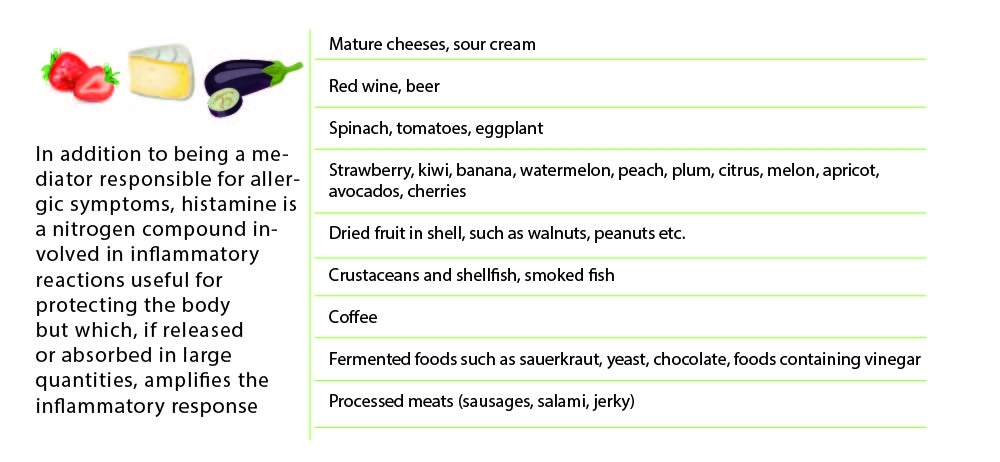
Even less commonly known is that in patients who are allergic to some pollen families and to latex, "contact" with some plant foods can worsen the symptomatology, in a phenomenon called cross-reaction. The cross-reaction phenomenon occurs because many foods contain molecules similar to those contained in pollens, which are identified as similar by the immune system when ingested, thus triggering the reaction. Since not all people allergic to pollens necessarily have a cross-reaction to foods, and since not all foods listed might produce allergy, it is useful to have a physician prescribe the diet to follow on a case-by-case basis, in order to limit the risk of nutritional imbalances.
TABLE: cross-reactions or cross reactivity
POLLEN-FOOD AND LATEX-FOOD CROSS-REACTIVITY
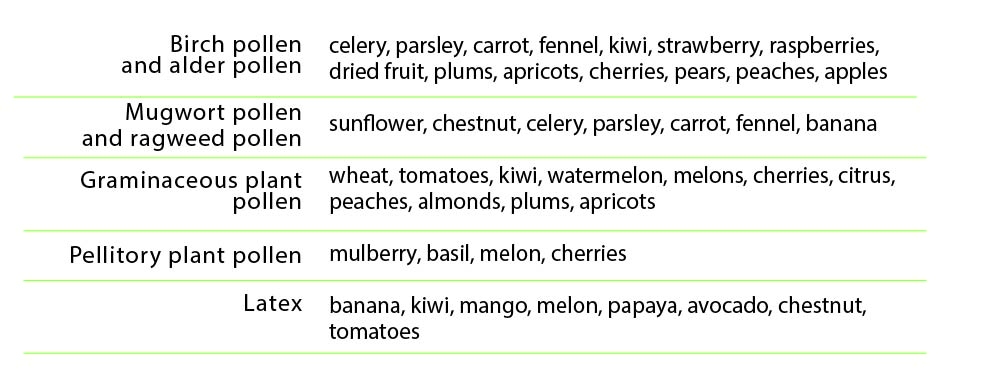
The good news is that Mother Nature provides foods with protective, anti-inflammatory and antioxidant action for situations in which oxidative stress and chronic inflammation play a major role in the worsening of symptoms (including allergies). We will mention a few: BLUE FISH, BROCCOLI, CAPERS.
THE BENEFITS OF
- LINSEED OIL, HEMP OIL. These are a valuable source of omega-3 fatty acids, known for their anti-inflammatory action. Alternated with traditional extra virgin olive oil, it is recommended that they be used raw. Once the container is opened, store it in the refrigerator.
- BROCCOLI. Due to its high concentration of vitamin C and β-carotene (the precursor of vitamin A), the presence of phenolic substances (polyphenols), sulforaphane (a generically beneficial and strongly antioxidant substance) and chlorophyll (an antioxidant), broccoli is a very valuable protective food. HOW TO CONSUME BROCCOLI. To preserve its properties, it is recommended to chop it finely and eat it raw, added to salads.
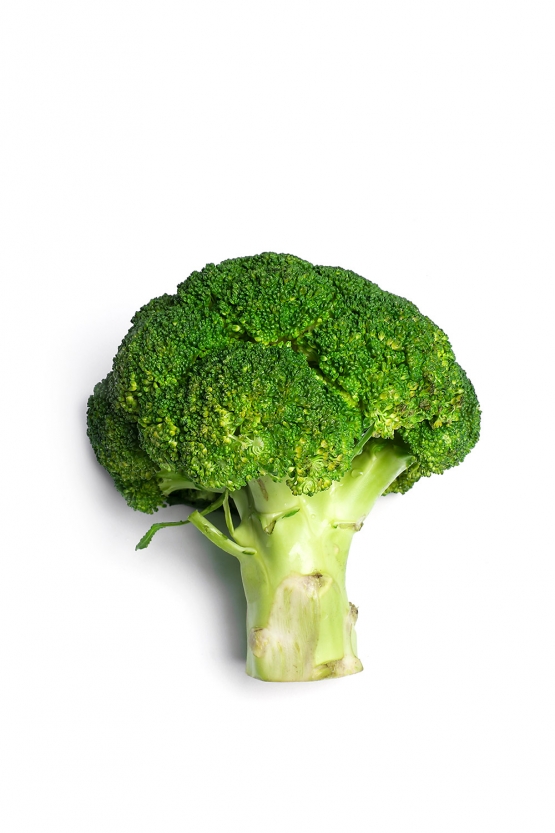
- CAPERS. Due to the presence of antioxidants including quercetin, capers can be a valuable food to introduce into your meals. Quercetin is increasingly known for its antioxidant and anti-inflammatory action, and is offered as a dietary supplement in formulations with antioxidant and anti-aging activity.
PLEASE NOTE:
Take into account that some foods, although they promote well-being, can be sensitizing, and precisely because it may not be easy for an allergic person to choose the right foods, it is recommended to consume them under the supervision of a qualified professional with experience in allergies and nutrition.
- choosing foods of organic and/or 0-km origin
- following a varied diet, favoring the consumption of fruits and vegetables, preferably in season, easily digestible proteins (fresh small fish, white meat, eggs), legumes, pumpkin seeds, sunflower, flax, chia, etc., walnuts, almonds, hazelnuts, etc.
- consuming cereals, preferably whole grain but not only, because in some cases fiber prevents the absorption of minerals and other nutrients, semi-wholegrain cereals and pseudocereals (quinoa, buckwheat, amaranth)
- preferring foods that are sources of omega-3 fatty acids, such as flax oil, hemp oil, oily fish (mackerel, sardines, sardines etc.), chia seeds, flax seeds, etc.
- staying adequately hydrated. Water requirements vary from individual to individual and change according to different lifestyles, the type of activity and the diet. An adult should generally drink 2 liters of water per day for maintaining their health. Water is an essential element for the body because it regulates various biological functions. Therefore, it is important to maintain proper hydration, especially during the summer season, during sports activities and in all situations where a lot of fluids are lost.
- avoiding abuse of gluten-containing foods, packaged foods and fried foods
- llimiting sugar, sugary drinks, refined grains (white bread, white pasta, white rice, etc.)
avoiding hydrogenated fats, limiting red meat, milk and its derivatives, and salt. When consuming them, prefer those of high quality
The notions and advice offered herein are for educational purposes only and cannot under any circumstances replace medical advice. For a complete diet, it is necessary to consult a nutritionist, who, after appropriate clinical and instrumental examination, will be able to identify the needs of the person concerned and put together a personalized diet plan.